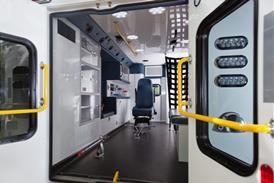People with mental health issues living at home need constant medication management
Introduction
One in four people will experience a mental health problem of some kind each year in England, according to MIND.
Sponsored and written by
And in its latest analysis, the British Medical Association (BMA) paints a bleak picture: the number of people seeking help is rising, funding is below the required level, vacancies are rising, and the number of beds is inadequate.
Incredibly, the BMA analysis notes: “The percentage of adults aged 16-74 with a common mental disorder, who were accessing mental health treatment has risen from 23.1 per cent in 2000 to nearly 40 per cent in 2014.”
Living with a mental health issue has serious consequences; again, according to MIND, over the course of someone’s lifetime:
- One in five people have suicidal thoughts.
- One in 14 people self-harm.
- One in 15 people attempt suicide.
It’s also a huge economic issue. According to the Mental Health Foundation, mental ill health is now the most common cause of work-limiting conditions among those aged 44 years and younger. In 2022-23, there were an estimated 875,000 workers suffering from work-related stress, depression or anxiety, resulting in 17.1 million working days lost.
A spoonful of sugar
Medicines are the second biggest spend for the NHS: £17.4bn a year, or one in every seven pounds.
According to Statista, community pharmacies dispensed over a billion prescribed items in England in 2023-24, an average of 20 items for every person.
The NHS Business Services Authority, in its latest analysis, estimated that 89 million antidepressant drugs were prescribed to 8.7 million patients in 2023-24, an increase of 3.3 per cent on 2022-23.
In addition, 2.9 million CNS stimulants and ADHD drug items were prescribed to 280,000 identified patients. Prescribing for adults rose by 28 per cent to 150,000 patients, while prescribing for children rose 9.9 per cent to 120,000 patients.
Meanwhile, 14 million hypnotic and anxiolytic items were prescribed to 1.9 million identified patients, and 14 million antipsychotic items were prescribed to 860,000 identified patients. Twice as many identified patients were prescribed antipsychotics in the most deprived areas versus the least deprived.
Problems at home
When they get into the system, people living with mental health issues are typically prescribed medication.
The most common prescriptions are for antidepressants, anti-anxiety medications, stimulants for ADHD, and antipsychotics for conditions like schizophrenia and bipolar disorder.
These are dangerous drugs if not taken properly, with potentially serious side effects. So taking them on time, in the right dosage, is vitally important.
According to the Pharmaceutical Press: “Adhering to (or compliance with) the recommendations on how to take all these medicines is essential if they are to work successfully and with minimal side effects”.
But those at home living with mental health issues are the ones most likely to fail to remember to take their meds, or to deliberately overdose.
So there need to be systems in place to monitor and report on this most vulnerable group.
What could those systems look like, and what are the most effective mechanisms for ensuring adherence and safety?
Remote possibilities
The simple act of contacting patients each time their medication is due to be taken and then literally watching them take it has proved to be transformative in increasing adherence rates.
Remote medication monitoring systems and remotely lockable cabinets are two examples of how technology can be used to address these complex problems.
A monitoring team can open a cabinet at the agreed time to observe the removal of medicines, their administration and replacement, then close and lock it. The regular status system signal from the cabinet ensures the team becomes aware of problems as soon as they appear.
If medicine isn’t replaced in the cabinet, the system can alert a nominated clinician, or call the emergency services. This is particularly important for those taking high-risk medicines, including epilepsy drugs, clozapine, lithium, warfarin and antipsychotics.
With a communications hub in place at home, there is much more that can be done, including issuing reminders for appointments and giving advice on medicine-related issues.
Conclusion
Mental health issues are an increasingly serious problem for millions of people living with them, and for the NHS and the economy.
The most common outcome for a patient is to have medication prescribed, but mental health medication can be very dangerous if not taken on time or at the right dosage, a problem that is made acute when patients are at home.
Technology can improve adherence rates and increase safety for those patients, and it can be an early warning system for when issues arise.
To find out more, visit https://paman.org.uk/.
































